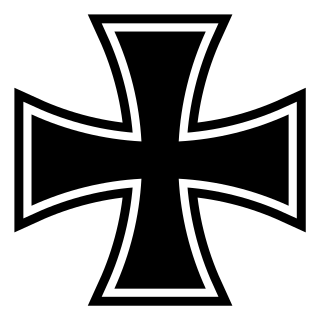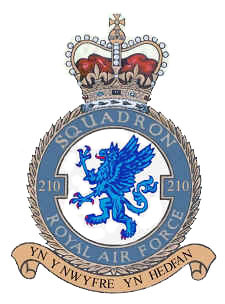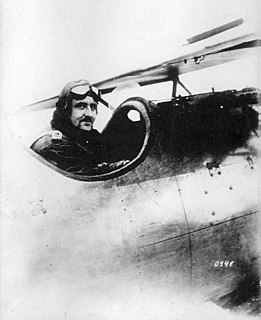| Wolfgang Güttler | |
|---|---|
| Born | 22 February 1893 Reichenstein |
| Died | 20 February 1918 (aged 24) Reneuil Ferme |
| Allegiance | German Empire |
| Service/ | Aviation |
| Rank | Leutnant |
| Unit | FA 72, FAA 285, Jagdstaffel 24 , Jagdstaffel 13 |
| Commands held | Jagdstaffel 13 |
| Awards | Iron Cross (both classes) |
Leutnant Wolfgang Güttler was a World War I flying ace credited with eight aerial victories. He would score the first four while flying with Jagdstaffel 24 , and the last four while flying as commander of Jagdstaffel 13 . He was killed in a midair collision over his home airfield on 20 February 1918. [1]

A flying ace, fighter ace or air ace is a military aviator credited with shooting down several enemy aircraft during aerial combat. The actual number of aerial victories required to officially qualify as an ace has varied, but is usually considered to be five or more.
Royal Saxon Jagdstaffel 24 was a "hunting group" of the Luftstreitkräfte, the air arm of the Imperial German Army during World War I. As one of the original German fighter squadrons, the unit would score 89 verified aerial victories.
Royal Prussian Jagdstaffel 13 was a World War I "hunting group" of the Luftstreitkräfte, the air arm of the Imperial German Army during World War I. The unit would score 108 aerial victories during the war, at the expense of twelve killed in action, one killed in a flying accident, two wounded in action, and two taken prisoner of war.
Wolfgang Güttler was born in Reichenstein on 22 February 1893. At the start of World War I, he served with the Jäger-Bataillon Nr. 11 (11th Jaeger Bataillon), and won a Second Class Iron Cross. He then transferred to the Die Fliegertruppen (Imperial German Air Service). [2]

The Iron Cross is a former military decoration in the Kingdom of Prussia, and later in the German Empire (1871–1918) and Nazi Germany (1933–1945). It was established by King Frederick William III of Prussia in March 1813 backdated to the birthday of his late wife Queen Louise on 10 March 1813 during the Napoleonic Wars. Louise was the first person to receive this decoration (posthumously). The recommissioned Iron Cross was also awarded during the Franco-Prussian War, World War I, and World War II . The Iron Cross was normally a military decoration only, though there were instances of it being awarded to civilians for performing military functions. Two examples of this were civilian test pilots Hanna Reitsch who was awarded the Iron Cross 2nd Class and 1st Class and Melitta Schenk Gräfin von Stauffenberg, who was awarded the Iron Cross 2nd Class, for their actions as pilots during World War II.

The Deutsche Luftstreitkräfte —known before October 1916 as the Fliegertruppen des deutschen Kaiserreiches or simply Die Fliegertruppe—was the World War I (1914–18) air arm of the German Army, of which it remained an integral part. In English-language sources it is usually referred to as the Imperial German Air Service, although that is not a literal translation of either name. German naval aviators serving with the Marine-Fliegerabteilung remained an integral part of the Imperial German Navy. Both military branches, the army and navy, operated conventional aircraft, observation balloons and Zeppelins.
After training as a pilot, Güttler was posted to Feldfliegerabteilung (Field Flier Detachment) 72 on the Eastern Front in 1916. He later served with Feldflieger Abteilung (Field Flier Detachment) 285. During this time, he was awarded the First Class Iron Cross in November 1916. [2]

The Eastern Front or Eastern Theater of World War I was a theatre of operations that encompassed at its greatest extent the entire frontier between the Russian Empire and Romania on one side and the Austro-Hungarian Empire, Bulgaria, the Ottoman Empire and the German Empire on the other. It stretched from the Baltic Sea in the north to the Black Sea in the south, involved most of Eastern Europe and stretched deep into Central Europe as well. The term contrasts with "Western Front", which was being fought in Belgium and France.
He then underwent single-seater fighter training at Fliegerersatz-Abteilung (Replacement Detachment) 11. He was then posted to a fighter squadron, Jagdstaffel 24 , on 10 March 1917. He scored his first aerial victory on 2 May 1917, when he shot down a Nieuport 17 south of Bienes. By 9 August, he had shot down a Spad VII and two Sopwith Triplanes of 10 Naval Squadron RNAS. [2]

The Nieuport 17 C.1 was a French sesquiplane fighter designed and manufactured by the Nieuport company during World War I. An improvement over the Nieuport 11, it was a little larger than its predecessors, and better adapted to the more powerful engine than the interim Nieuport 16. Aside from early examples, it would incorporate the newly-developed Alkan-Hamy synchronization gear, permitting the use of a fuselage-mounted synchronised Vickers gun firing through the propeller disc.

The Sopwith Triplane was a British single seat fighter aircraft designed and manufactured by the Sopwith Aviation Company during the First World War. It was the first military triplane to see operational service. The Triplane joined Royal Naval Air Service squadrons in early 1917 and was immediately successful. It was nevertheless built in comparatively small numbers and was withdrawn from active service as Sopwith Camels arrived in the latter half of 1917. Surviving Triplanes continued to serve as operational trainers until the end of the war.

No. 210 Squadron was a Royal Air Force unit established in World War I. Disbanded and reformed a number of times in the ensuing years, it operated as a fighter squadron during World War I and as a maritime patrol squadron during the Spanish Civil War, World War II and the Cold War before it was last deactivated in 1971.
On 29 September 1917, he was posted to Jagdstaffel 13 to command it as its Staffelführer (C.O.). He scored his fifth victory on 20 October 1917; on 19 February he scored his eighth. The following day, Wolfgang Güttler was engaged in aerial combat over Jasta 13's home aerodrome at Reneuil Ferme when he collided with another German pilot and was killed in action. [2] [3]
Killed in action (KIA) is a casualty classification generally used by militaries to describe the deaths of their own combatants at the hands of hostile forces. The United States Department of Defense, for example, says that those declared KIA need not have fired their weapons but have been killed due to hostile attack. KIAs do not come from incidents such as accidental vehicle crashes and other "non-hostile" events or terrorism. KIA can be applied both to front-line combat troops and to naval, air and support troops. Someone who is killed in action during a particular event is denoted with a † (dagger) beside their name to signify their death in that event or events.


